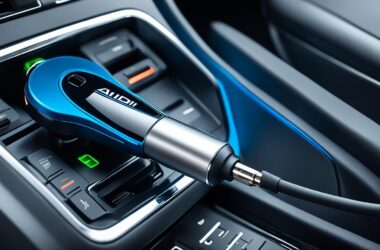Addressing Charge Point Downtime
In the midst of the electric vehicle (EV) revolution, an obstacle threatens to impede progress – charge point failure. Research indicates that charge points are operational only around 70% of the time on average. This means that out of every three attempts to charge your EV, one might leave you stranded. Charge point downtime can result from various glitches, including the inability to charge, slower-than-usual rates, or sudden interruptions.
Understanding the Challenge
For example, a study conducted by the University of California revealed that only 72.5% of 657 EVSEs (Electric Vehicle Supply Equipment) in the US were operational. The situation in Europe is no better, with European public charging networks facing similar challenges. The stakes are even higher for private fleet charging operations, such as those managing buses, trucks, or commercial vehicles, as downtime can have disastrous consequences. Fleet operators require near-perfect uptime, ideally 99%, to ensure seamless service delivery to their customers.
Common Culprits
The main culprits behind charge point downtime range from faulty hardware to communication errors and compatibility issues between vehicles and chargers. Resolving these issues before they impact operations is crucial.
Strategies to Enhance Charge Point Uptime
1. Swift Error Identification
One of the biggest hurdles in addressing charge point downtime is the slow process of identifying errors. It often takes several days to detect an issue or receive a complaint, even with a 24-hour repair turnaround. This delay prolongs downtime significantly. To tackle this, leveraging automated error detection systems is essential. These systems, such as charging management software, can detect errors in real-time, ensuring swift resolution.
2. Notification System
A notification system can play a vital role in maintaining charge point uptime. Rather than manually monitoring all charging data, operators can rely on alerts delivered to their mobile devices or emails. These alerts notify operators of any issues, allowing them to intervene promptly. Integration with analytical views further enhances the system’s performance, providing operators with comprehensive insights without the need for constant oversight.
3. Access to OCPP Logs
Access to detailed OCPP (Open Charge Point Protocol) logs is essential for efficient problem-solving. These logs, accessible in real-time, allow operators to track the behavior of charge points and identify the root cause of errors. Historical logs can also be valuable in dealing with recurring issues, enabling operators to address underlying issues effectively.
Conclusion
Charging stations are complex systems that require careful monitoring and maintenance. However, high downtime isn’t necessarily the fault of hardware manufacturers. Often, it results from inadequate charging management software. Software that rapidly identifies errors, notifies operators, and provides access to relevant logs is crucial for achieving optimal uptime. Ampcontrol offers smart charging solutions designed to maximize charge point uptime through rapid fault detection and notification. For further insights, download our OCPP report or connect with our team directly.










